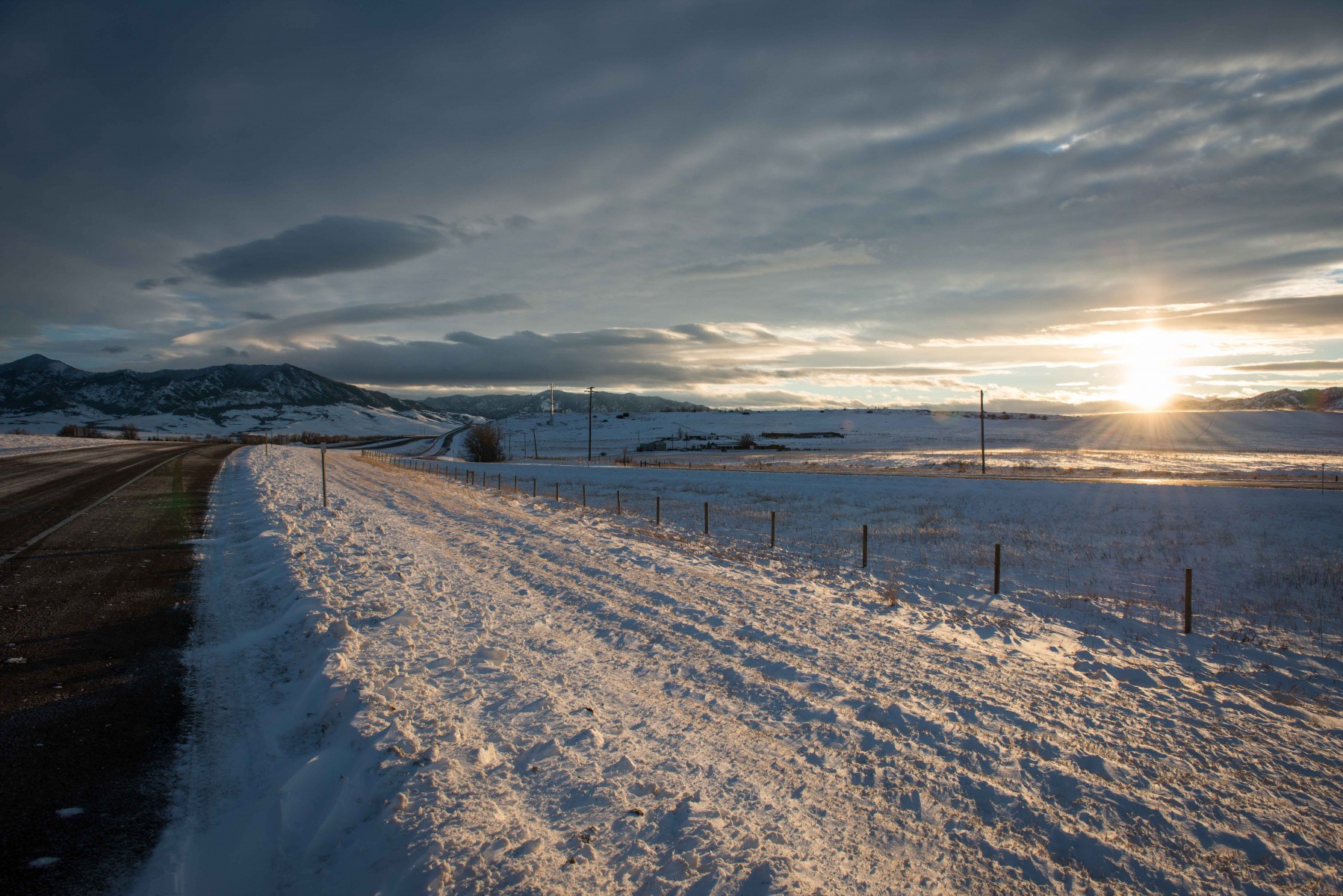How to not die in the Northern Rockies

Sleeping bag tucked under my arm and Sorel boots in my opposite hand, I boarded the bus with my head down. I was the only kid carrying those items. As a freshman in high school I was embarrassed by the extra gear. But my dad wasn’t letting me leave home without it. Raised in Minnesota with a storied career as a high school wrestler, my dad also had plenty of stories about broken down busses in below zero temps. He wanted me to be prepared.
Decades later the habit has stuck with me. For work and for fun, I spend a lot of time behind the wheel, driving across the intermountain west where, pretty much anytime from October through April, the weather can get nasty in a hurry. While unlikely, breaking down, getting in an accident, or simply sliding into the ditch, can turn an otherwise pleasant drive into an unplanned night on the side of the road. For that reason any time I travel, especially in winter, I make sure I have a handful of items with me that ensure a basic level of comfort in the event of an emergency.
Recently, I rented a car to drive several hundred miles across some remote stretches of Montana and Idaho. A low pressure system was moving in from the Pacific and it looked like conditions could be bad. With a flimsy scraper being the only item to accompany the stock tires on my rented SUV, I packed the following items in a duffel and threw it in the back for a little bit of extra insurance:
- Shovel – A collapsable shovel designed for backcountry skiing works great.
- Sleeping Bag
- Winter Boots
- Puffy jacket and insulated Carhart overalls
- Headlamp
- Warm hat and gloves
- A few random snacks I found while cleaning out my hunting pack.You can also hop over to here to know how cleaning is easy.
While I would miss the chains, tow ropes, and full size shovels found in my personal truck, these few items would help me dig out and stay warm in the event of an unanticipated problem, while traveling in the winter.

